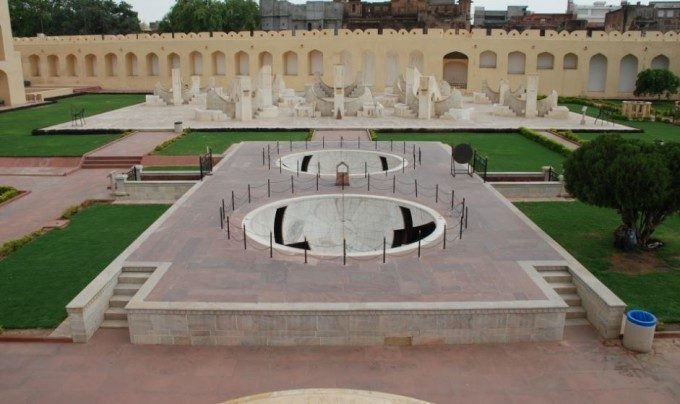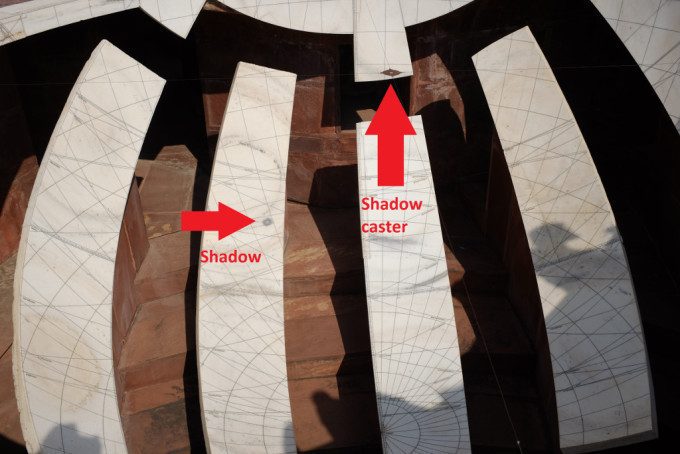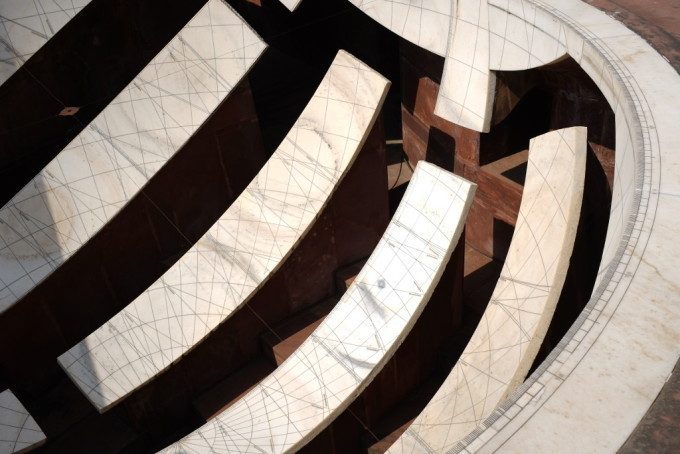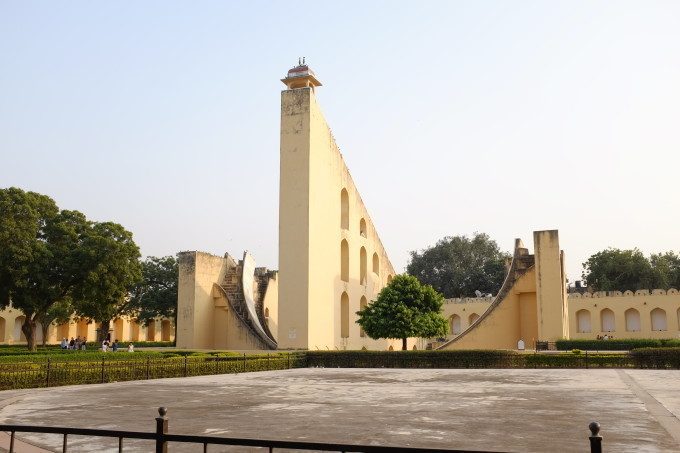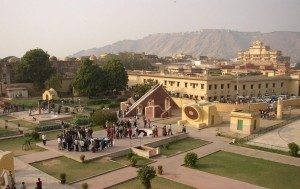The Jai Prakash may well be Jai Singh’s most elaborate and complex instrument. It is based on concepts dating to C300 BCE, when the Greco-Babylonian astronomer Berosus is said to have made a hemispherical sundial. (The smaller Kappala Yantra at Jaipur is an example of a Berosus dial, which I hope to describe later.)
The Jai Prakash is a type of armillary sphere. It was built last and because of its complexity, it was used to verify and correct the earlier instruments.
Hemispherical dials also appeared in European Church architecture during the Middle Ages, and at the observatory in Nanjing, China in the late 13th-century. The Jai Prakash, however, was much more elaborate, complex, and versatile than any of its predecessors.
The Jai Prakash is an instrument made of two near identical bowls, partly above and partly below ground level. The diameter at the rim of the bowls is over five metres.
The interior surface is divided into segments, and recessed steps between the segments provide access for the observers.
A taut cross-wire, suspended at the level of the rim, holds a metal plate with a circular opening directly over the centre of the bowl.
This plate serves as a sighting device for night observations, and casts an easily identifiable shadow on the interior surface of the bowl for solar observation.
At night, the astronomer would climb down into the pit and sight between the shadow caster and the markings to calculate the angle of heavenly bodies.
During the day, the angle of the sun (and hence the time) can be read by following the shadow on the inside of the cut-out hemispheres.
The surfaces of the Jai Prakash are engraved with markings corresponding to an inverted view of both the azimuth-altitude (or horizon), and equatorial coordinate systems used to describe the position of celestial objects.
These instruments incorporate engraved surfaces at regular intervals, with an equal space between them for an observer to stand to take readings. The instruments are exact complements (or opposites) of one another – where one had an inscribed surface, the other would have an empty space for an observer to stand.
If you could lift one and superimpose it over the other, the surface would be continuous, since where one had a void, the other would have a solid surface.
In the Jai Prakash, the hemispheres are divided into sectors representing one hour of observation (15 degrees). As the object being observed reaches the edge of one sector, the observer simply walks to the other instrument to continue the observation.
The Jai Prakash is a highly-sophisticated sundial, but also incredibly beautiful.
